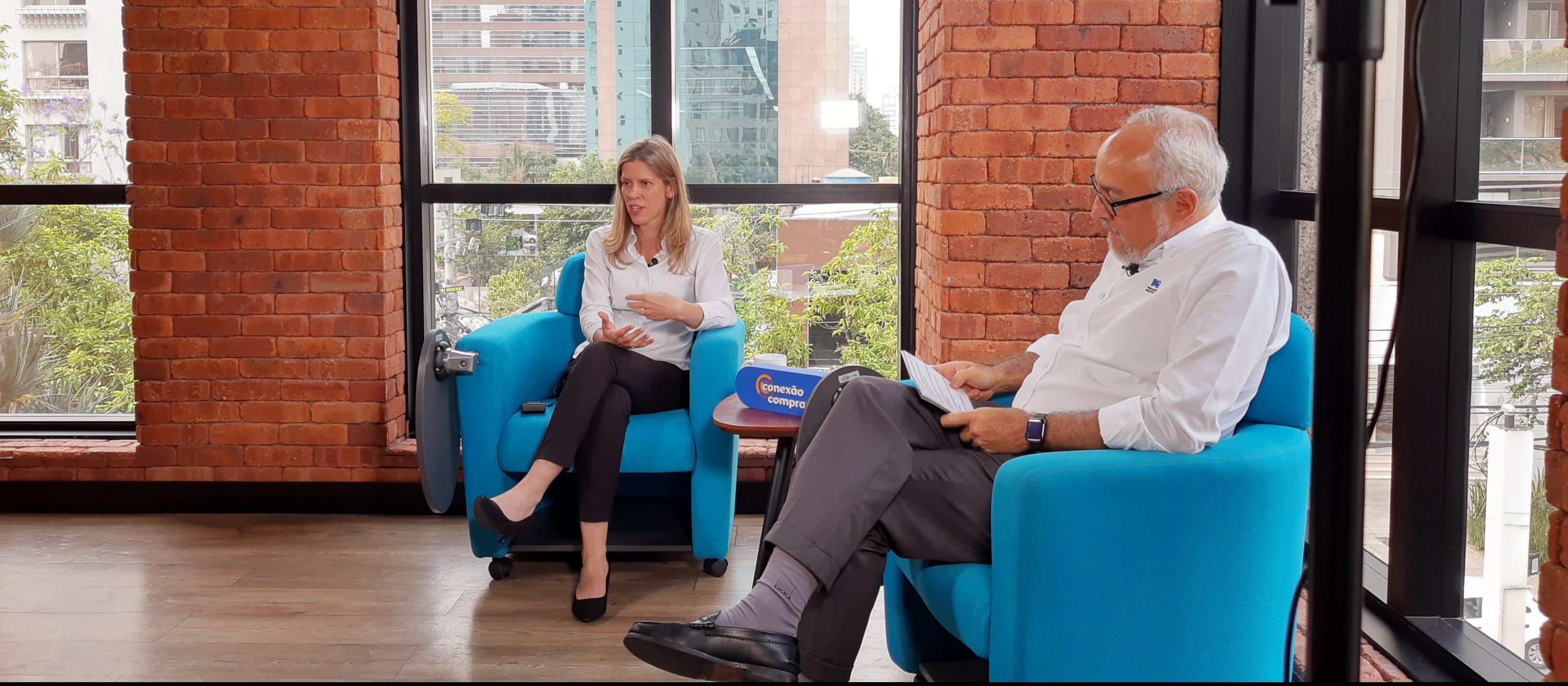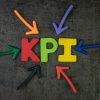
On October 24th, Mercadoe held the second episode of Procurement Connection, the B2B market’s talk show. That show has the purpose of gathering professionals and procurement experts, so they can share their experiences, and talk about trends, practices and challenges of daily work.
Daniela Ferreira was the guest of this episode; she’s head of procurement at Bridgestone, and has over 10 years of experience in procurement and market intelligence. She’s now concluding her master’s degree in Business Administration, with an emphasis on Industry and Procurement 4.0.
The subject of the debate was Procurement 4.0: the procurement area’s position with regard to new technologies and digital transformation. During the show, Luiz Gastão Bolonhez and Daniela talked about topics such as “4.0 scenario in Brazil and the World”, “Technologies and innovations in the procurement area”, “Challenges and risks of implementing technology in procurement” and “People management in a 4.0 world”.
Now you can see here, in our blog, the key points addressed during the chat. And if you want to watch the full talk, just access this link!
4.0 scenario in Brazil and in the world
Daniela started the conversation by talking about a changing behavior of the market and used the car industry as an example. Previously, when buying a car, people took into account vehicle performance, the engine (1.0, 1.6, 1.8, etc), the power, etc. Nowadays, they want to know also about connectivity, multimedia kits and other functions. The same evolution of behavior occurs in the B2B segment. Buyers and suppliers must be attentive, because relationships change according to market changes.
All these changes are happening due to the 4.0 scenario, which brings a lot of novelties with it. However, like everything that’s new, technological advances arouse many questions, both in Brazil and the world. So what is the best technology? How to deploy it? Will this change be good for the company? What will be the buyer’s role in this digitized world?
The only things that distinguish our country from the others are bureaucracy and taxes, as Brazil poses more barriers and complexities to adhere to innovation, thus making the digitization of companies more difficult.
The buyer’s role
A recurring question is “what will be the buyer’s role in the 4.0 world?” According to Daniela, the role of buyers has changed and will change even more. Professionals will do no more mechanical and tiresome activities, and will start to act strategically, by cultivating relationships with suppliers, and bringing innovation and new deals to the company.
Strategic position has always been the one buyers should hold, but never had time for it. They will now be able to do so, with the help of technological advances.
Technologies that already influence the procurement area
There’s no way to be part of the disruptions and changes that are taking place now without a proper access to tools and connectivity.
Currently, the most influencing technologies for the procurement area are cloud computing (because it brings mobility to the sector), Internet of Things (which makes processes talk to each other), and data (which have the power to orient decisions and map customers).
Together, these three technologies provide agility for procurement’s daily chores, enabling professionals to be mobile and closer to users, without losing negotiation opportunities and market updates.
Artificial intelligence in the procurement area
Many people believe that artificial intelligence will be in charge of decision-making in procurement, but that isn’t true.
It’s obvious that this technology has the required automation for such purpose. However, in this sector you must currently consider several variations, from the mid- and long-term scenario to the tax one and other variables.
However, technology can be used to optimize some processes and make them more fluid, in order to eliminate repetitive work.
Using 100% artificial intelligence poses some risks, as the market behavior can change, while the algorithms go on working in the same way, until something goes wrong.
Therefore, it’s vital to have human beings to evaluate all possibilities.
Procurement x E-procurement: the challenges of transformation
One of the major challenges faced by businesses is putting their digital transformation plans into practice – that is, migrating from off-line to on-line without neglecting important tasks of everyday life.
During this change, the installed processes will be usually questioned. To support and smooth this transition, it’s important that all leaders keep their teams motivated, as changes can cause difficulties when still unfinished, thus influencing the industry throughout.
Leaders must try to highlight the gains the team will have after the completion of such transformation.
The profile of future buyers
Buyers won’t be afforded to think about quotations and orders only; they will have to consider the company and market scenarios, always thinking in the mid- and long-term.
In fact, the procurement professional will no longer be judged by the number of orders and requests per minute. Notwithstanding the importance of such performance, it will be the task of platforms with algorithms. The buyer will have to think about how to improve processes, and how to add value by bringing better negotiations and contracts.
One of the key skills for buyers will be their relationship with suppliers, how they can strengthen ties and foster innovation between companies, and encourage win-win transactions for both parties.
This is a brief summary of the second episode of Procurement Connection. To know all details of the talk show, just watch the full video through this link.
Take this opportunity and subscribe to our newsletter, as we will soon publish another episode of B2B market’s talk show! ?


 Português do Brasil
Português do Brasil Español
Español Português
Português
